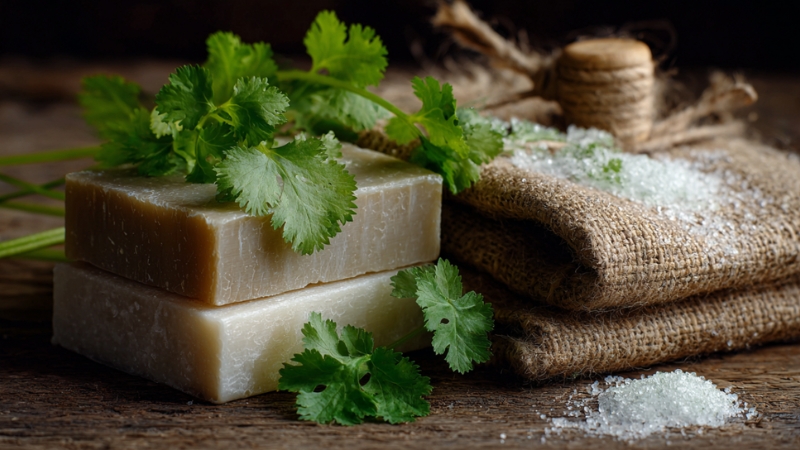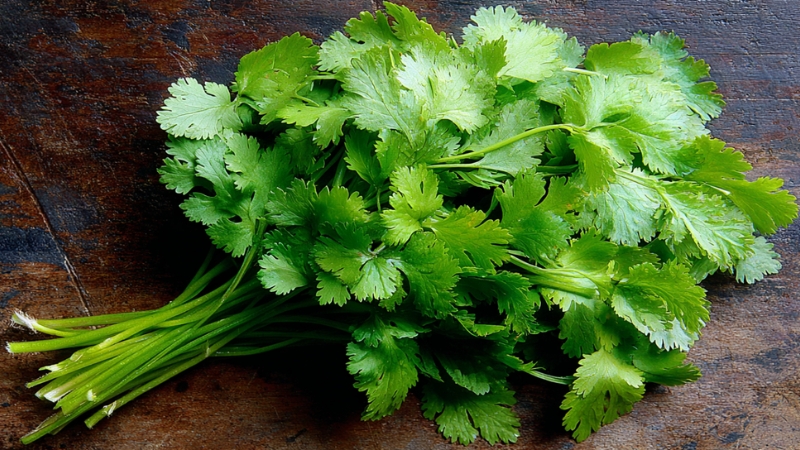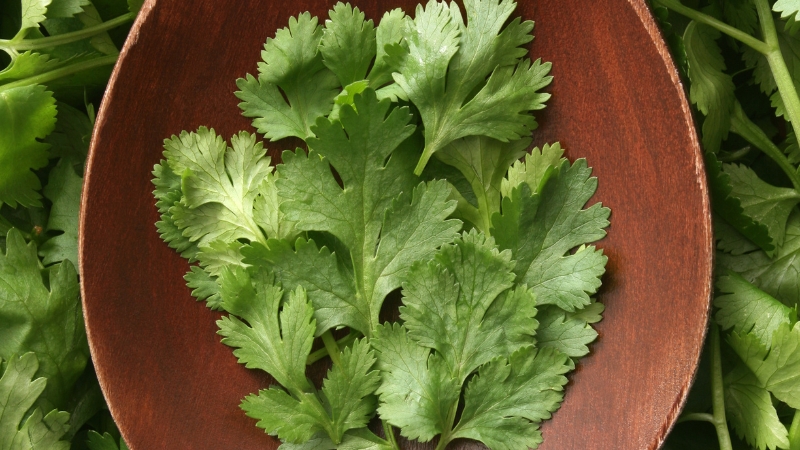If you’ve ever sat down to a fresh taco or bowl of pho, only to recoil at the taste of cilantro, you’re not just being picky – your genes are literally to blame.
For some people, cilantro tastes zesty and refreshing. For others, it tastes unmistakably like a bar of soap.
This love-it-or-hate-it reaction isn’t about imagination or culinary bias. It comes down to genetic differences in how we perceive certain odor molecules. In other words, the same herb that adds brightness for one person triggers a “cleaning product” memory for another.
Let’s look at why this happens, how it works scientifically, and whether your palate can ever change its mind.
The Science Behind the Soap

Cilantro (also called coriander leaves) contains a group of aldehyde compounds – organic molecules that give off a strong scent. Some of these aldehydes are nearly identical to those found in soaps, lotions, and household cleaning products.
For most people, the brain interprets those aldehydes as “fresh” or “citrusy.” But a specific genetic variant makes others far more sensitive to them – turning what should smell like herbs into what smells (and tastes) like detergent.
The key player is a gene called OR6A2, part of a family responsible for detecting odors.
People who carry certain variants of this gene are especially sensitive to aldehydes, particularly E-2-decenal and E-2-dodecenal – two compounds that contribute both to cilantro’s distinctive aroma and the scent of hand soap.
Compound
Found In
Perceived Scent
E-2-Decenal
Cilantro, soaps, lotions
Waxy, citrus, soapy
E-2-Dodecenal
Cilantro, coriander seeds
Fatty, floral, detergent-like
Linalool
Basil, mint, cilantro
Fresh, herbal, floral (pleasant to most)
If your OR6A2 receptors over-respond to these aldehydes, your brain connects cilantro’s aroma with “cleaning agent” instead of “fresh greens.”
How Common Is the “Soapy Cilantro” Gene?
This genetic quirk is surprisingly common, but it varies by population.
According to data from the DNA testing company 23andMe, roughly 10–14% of people of European ancestry report that cilantro tastes like soap.
The rate drops to around 4% in East Asian and 3% in African populations, while certain Middle Eastern and South Asian groups show intermediate levels.
Population Group
% Reporting Soapy Taste
Source
European
10–14%
23andMe survey
East Asian
~4%
23andMe
African
~3%
23andMe
South Asian
7–9%
Combined studies
Latin American
8–10%
23andMe
These differences suggest the “soap gene” variant developed unevenly across human evolution – perhaps as a side effect of how different groups adapted to odor and taste receptors in their environments.
Why It Feels So Strong

Taste and smell are deeply connected. About 80% of what we call taste is actually smell, interpreted by olfactory receptors in your nasal cavity.
When your receptors overreact to aldehydes, that “soapy” note dominates every bite, even if the flavor molecules on your tongue are mild.
That’s also why you can’t just “get over it” instantly. For your brain, the soap connection is chemically real, not psychological.
Still, there’s hope. Some people who once hated cilantro gradually learn to tolerate it – or even enjoy it – after repeated exposure.
Cooking, chopping, or blending cilantro changes the chemical balance of its aldehydes, making them less intense.
Over time, your brain can adapt and re-associate the smell with food instead of soap.
Can Cooking or Preparation Help?
View this post on Instagram
Yes – how you prepare cilantro changes everything.
1. Chop or Crush It
Chopping releases enzymes that break down the strongest aldehydes, muting that soapy edge. Crushing or pureeing it in a salsa, guacamole, or curry helps too.
2. Add Acid
Cilantro’s sharp compounds mellow out when mixed with lemon or lime juice. That’s why you often see it paired with citrus in Latin American and Southeast Asian dishes.
3. Use Heat
Cooking cilantro in soups or stir-fries softens its aroma. High heat changes the volatile aldehydes, making them smell less like soap and more herbal or nutty.
4. Start Small
If you’re genetically sensitive but curious, begin with small amounts in cooked dishes. Your brain can adjust to new associations over time.
The Broader Lesson: Taste Is Genetic
Cilantro isn’t the only food whose perception depends on DNA. Similar genetic variations affect how people taste bitterness in Brussels sprouts, sweetness in aspartame, or spiciness in chili peppers.
Food
Gene Involved
Taste Effect
Cilantro
OR6A2
Soapy, aldehyde sensitivity
Brussels Sprouts
TAS2R38
Bitter or neutral
Cilantro Seeds (Coriander)
OR10A6
Warm, spicy vs. earthy
Chili Peppers
TRPV1
Sensitivity to heat
Artificial Sweeteners
TAS1R3
Overly sweet or metallic
These variations show that “taste” isn’t universal – it’s part chemistry, part culture, and part evolution.
Bottom Line

If cilantro tastes like soap to you, it’s not your fault – it’s written in your DNA. Your OR6A2 gene amplifies certain aldehydes that other people barely notice.
It’s a small quirk of biology that turns one person’s favorite garnish into another’s culinary nightmare.
The good news? With time, preparation tricks, and the right recipes, even the most committed cilantro skeptic can find ways to enjoy it – or at least stop feeling guilty for skipping it.
Whether you love it or hate it, cilantro remains one of nature’s best reminders that taste is personal, biological, and beautifully human.
Hi there, my name is Kelly Barlow and kellytoeat.com is my blog. Here, I write about various recipes I want to reccommend to readers.
I try to find the best possible recipes that can attract the attention of readers, and at the same time, I strive to write it in the most engaging manner possible.
When I was younger, I wanted to become a chef. Sadly, it wasn’t meant to be, but at the very least, I write about it.
